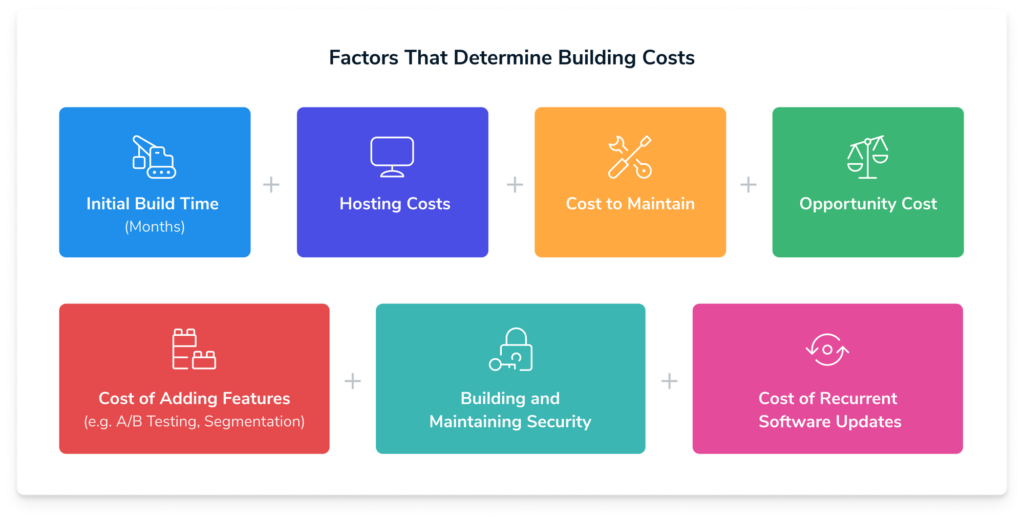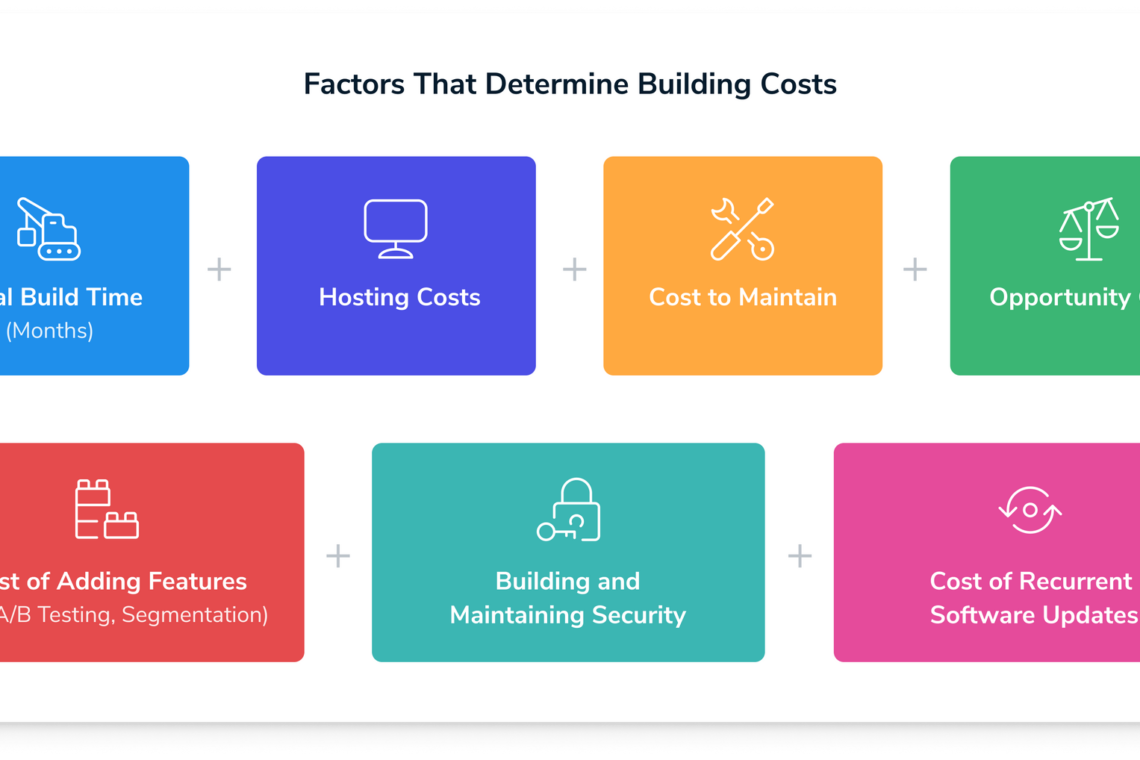
Passionate developers on both sides of the topic have long argued over whether to create or acquire, but the answer very probably relies on the particular business and product under consideration. Opportunity cost, however, ought to be a constant topic of discussion. Surprisingly, many businesses neglect to take this important factor into account.
Build vs. Purchase?
Some businesses who consider messaging to be a vital aspect of their operations may feel the need to develop fully unique messaging solutions in relation to push notification and in-app messaging technologies. They can get the exact customised answer they may be seeking for with this option, nothing more, nothing less. Large-scale businesses are typically better suited for building since they have the bandwidth and resources needed for this continuing investment (and even then, there are tradeoffs).
On the other hand, investing in a best-in-class tool can free up a company’s entire development team to work on essential business objectives like expanding subscriber numbers, speeding up time to market, and improving product functionality. Almost often, integrating push notifications from a third-party provider is simpler and typically less expensive than creating. When purchasing instead of developing the hardware and software in-house, the software provider is responsible for keeping track of industry trends and regulations as well as continuously enhancing and updating the tool, whereas developing the hardware and software in-house requires developers with extremely specialised skills.
Opportunity Costs Should Not Be Ignored
When deciding whether to construct or acquire a customer message software, team leaders typically assess the expense of doing so against the time and resources that will be required. Many people do not realise, however, that it is not only the time and resource value that matters, but also the opportunity cost of what those qualified engineers could have accomplished with that time. What novel features might they be creating? What important updates to your product might they be making? And moving forward, what crucial KPI-focused project will you need to entice them away from when Chrome or Firefox periodically update how its users and websites can use push notifications?
There are certain crucial components and potential problems to think about as you consider creating your own messaging solution. You’ll need programmers who…
possess knowledge of operating systems that can successfully connect to HTTP/1 and HTTP/2 APIs. Keep in mind that API modifications, which occur once or twice a year along with the introduction of new iOS/Android versions, can experience more significant changes.
Recognize the fundamentals of building applications for iOS, Android, and the Web for Web Push. iOS alerts, for instance, might need to be handled differently depending on whether an app is focused, running in the background, or closed.
Know Java or Kotlin for Android and Objective-C and Swift for iOS.
a demonstrable case for
A Proof Of Concept can show whether a SaaS solution can deliver business value and integrate seamlessly into one’s enterprise tech stack before investing the time and resources necessary for a full-out implementation.
Setting up KPIs, figuring out your team’s resource needs, and comparing the cost of an investment with the cost of constructing the technology yourself are the first steps in conducting a successful POC that produces meaningful results. This template can be used for either channel, even if the methodology is slightly different for mobile and web.
Final Reflections
The actual cost of construction is often higher than the initial expenditure. It comprises both the one-time and recurring opportunity costs of the work you miss doing while your team is concentrating on creating and sustaining an internal solution. This high level of flexibility and control is worth the whole price for some businesses. But for many, it becomes difficult to justify the full cost to the firm if the opportunity cost is included on top of the actual time and resources required for building.
Download our detailed guide on both alternatives for push notifications and in-app messaging software if you’re debating whether to develop or buy for messaging. It includes instructions on how to do a fruitful proof of concept to support your choice.
